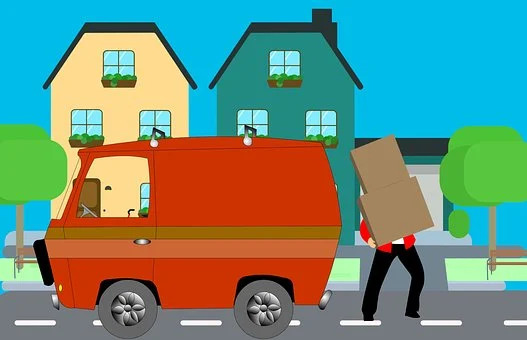
Aging in place at home is something many older adults want for their senior years, but few manage to stay in their own homes as they age. Why? Read on to learn about the five top avoidable reasons people need to leave their homes and move into a nursing home.
Only 25% of People Age at Home
Surveys from different parts of the world typically show that at 75% of older adults want to remain in their own home and avoid barriers to aging with in-home care. But only 25% actually make aging in place a reality with a home equipped to remove common barriers that do not support aging. This is of particular concern because nursing home spaces for institutional care of older adults are limited in most cities. Limited and expensive.
Besides, the impact on mental health for older adults forced by circumstances to live in a nursing home puts them at higher risk for avoidable conditions that impact mental health. The reason for all this is because most seniors can’t make it past the common, self reported barriers to aging in place. Here are five of the most common self reported barriers, with solutions for older adults looking to get past them and make in-home care part of their life.
Aging In Place Barrier#1: Technical Issues

Almost no homes are built with aging in place in mind, and this is where common barriers to aging in place begin. Wheelchair access ramp design, grab bars installation, bathroom safety modifications, kitchen design, wide doorways, general safety concerns, electronics to help with seniors living and aging in place – the list of actionable features is large and seems daunting. “Seems” but not necessarily the case.
The prospect of understanding, selecting and installing these features (or having them installed by a trustworthy contractor) is often a big barrier for older adults who want to stay in their own homes. Family members can certainly help getting actionable safety features installed, but it’s entirely possible for older adults to do this for themselves with non-family help as long as this happens early on and no one neglects actionable safety features and personal care options.
So what are the solutions to common barriers of technical overwhelment? Overcoming barriers to aging in place requires additional resources of information, especially about the technical side of aging in place for older adults. And there are lots.
I maintain an updated list of Resources on another website I built called www.aginwellathome.org. This is an excellent place to begin. Educating older adults (and younger people who care about them) is why I made AgingWellatHome.org, and my online companion course . Many older adults find this course an empowering place to start.
Aging In Place Barrier#2: Lack Of Confidence

The apparent complexity of the technical side of eliminating common barriers to aging in place leads to a lack of confidence in many older adults, especially older women. This is understandable and one of the factors leading to worry and general safety concerns in older adults who want aging in place, perhaps with in-home care as needs arise.
Lack of confidence is one of the factors older adults view as important, though it’s usually explained differently by family members. The solution to lack of confidence is nothing more than information, and the realization that aging in place is entirely doable for a wider range of older adults than you might think.
Aging In Place Barrier#3: Misunderstanding Financial Assistance

This is definitely one of the self reported barriers to aging in place that older adults often mention, but it’s of particular concern because the reality is quite different. Not only does it cost less to age in place for many older adults compared with institutional care, but financial worries often fail to recognize the fact that federal governments, regional governments and most cities offer grants and generous tax breaks for an aging population. The solution to financial worries comes down to a pen and paper to make a list of the federal government programs and other sources of funding that help fund seniors living while making life easier.
Aging In Place Barrier#4: Procrastination
This is probably the biggest reason most seniors don’t get the chance to stay in their own home. You wouldn’t believe how common it is to put off aging in place home improvement plans until it’s too late. The thinking I hear from many able-bodied, older adults usually goes like this:
“I’d love to make aging in place a reality in my life and make institutional community services in nursing homes unnecessary. All these aging in place ideas are great. I’ll keep them in mind for when I need them. For now I’m good.”
This mistaken idea leads to a huge and common problem. By the time the need for aging in place features come into sight, it’s often too late to do anything about them. The many benefits that are possible are lost because there’s no time to put them in place.
Aging never stops, and my own extended family is a case in point. Watch the video below and see why only 1 in 3 older adults succeed with aging in place daily living arrangements.
The solution to procrastination is to realize you probably don’t have as much time as you think. Starting with even the smallest bit of work to make aging in place possible is a powerful way to get the ball rolling with modifications. Beginning in your 60s is certainly not too soon to begin aging in place modifications.
Aging In Place Barrier#5: The Misconception Of Insufficient Help

As it turns out, this idea is also one of the most common barriers to aging in place. It’s also more of an imaginary worry for older adults rather than a reality.
“Who will help me with everyday activities around the house?”
“Who will help me get to doctors appointments?”
What if I need occupational therapy or personal health care, but can’t find any?
Elderly people often have worries like these about daily living and barriers to aging, but these worries are almost always unfounded. In fact, there are community services and organizations devoted to helping older adults get medical care, occupational therapy, home safety assessments, meal preparation, personal care and to overcome barriers to aging in place that might come up.
Even if you’re one of the many non-driving adults you can have no trouble aging in place with the kind of community services available in most cities and even many rural areas. And you don’t necessarily need to rely on public transportation. Limited resources are often much less of an issue than you as an older adult might realize. There really are no overly stringent eligibility requirements. The solution to the misconception of insufficient help is simply to look around, call sources of in home care, talk to family members, then follow up with a safety assessment.
Home Safety Assessments Completed
One of the places to begin is by having a home safety assessment completed. The information on AgingWellatHome.org will help, and it reveals what you’ll need for accessing support to make life easier and to deliver services and home improvement features needed for home mobility and home safety.
Community Services That Help
Family members are the first source of help for seniors (if available), but most cities and even rural communities offer in home care options, senior friendly public transportation, personal health aides and other options to help you as an older adult remove the barriers to aging in your daily living.
Will Family Members Help?
This issue varies a lot from one family to another, but there’s at least one good way to begin discussing the many benefits of helping an older adult remove barriers to aging. Most people who might be available to help seniors have full lives of their own. It’s important not to overwhelm any grown children with the prospect of them delivering in home care. Many barriers require additional resources beyond what even a grown child could offer.
The Challenges Faced By Older Adults
Fear of public transportation, insufficient medical care, home mobility, and home safety are just a few of the overarching categories that many older adults and families face and worry about. Barriers to aging can be overcome with the steps and ideas in this article. Making the solutions real is often not as difficult as older adults report, once the home improvements have been made. Bottom line: Aging in place at home is something many older adults can aspire to and achieve.
Common Barriers To Aging In Place FAQs
Q: What Are The 3 Most Common Problems Of Aging Older Adults?
A: The most common barrier is a person who neglects actionable safety features because they feel they “aren’t ready” to have them installed. Having home safety assessments completed is a key first step, but it’s not typically one of the factors older adults view as important.
Another common barrier is the financial fear of not being able to pay for modifications. Most cities have programs to help eliminate barriers to aging in place at home, with additional care available at reduced cost or no cost to help with personal care.
The third most common barrier is lack of knowledge about help with meal preparation, home improvement tasks and community groups that help with health conditions and other barriers.
++++++++
Q: What Are Some Significant Barriers That The Aging Population Faces?
The most significant barrier an aging population faces is psychological. Many seniors living on their own are reluctant to embrace changes that will allow them to continue aging in place. This is especially true when no pressing need to address the barriers is yet present. Lack of understanding of home safety features and an inability to assess these and have them installed is another significant barrier. Boosting home safety and home mobility are things that need to be addressed ahead of the need.
++++++++
Q: What’s A Common Barrier To Engagement For Older Adults?
A: The most common barrier to aging in place is fear. Fear that it won’t work, fear about not understanding the technical options, and fear that barriers requires additional resources.
++++++++
Q: What Is The Major Aspect Of Aging In Place?
A: The major aspect of aging in place is physical. As older adult reports show, loss of strength, loss of physical flexibility, and loss of mental acuity are the challenges that aging in place modifications are made to address.












